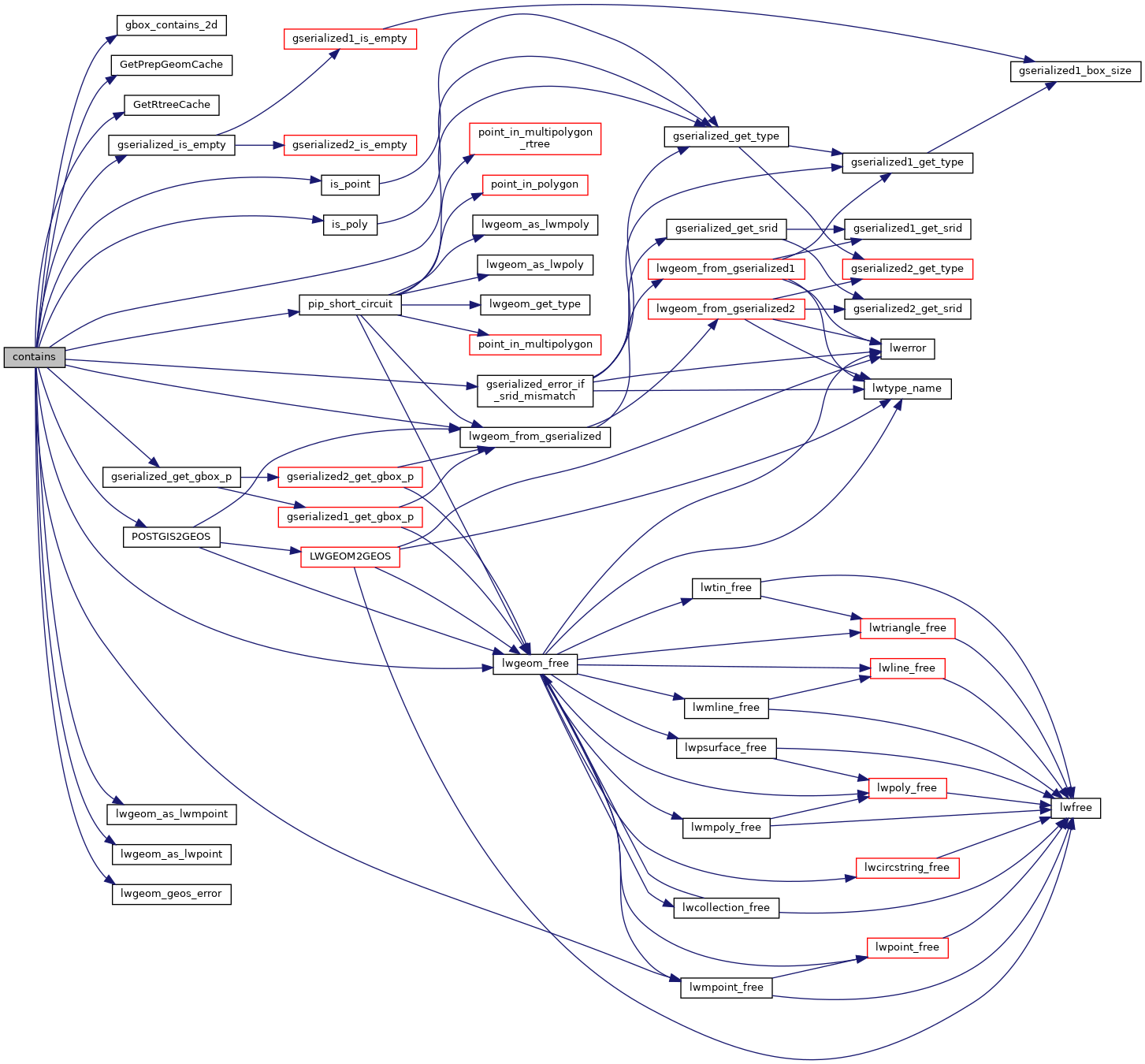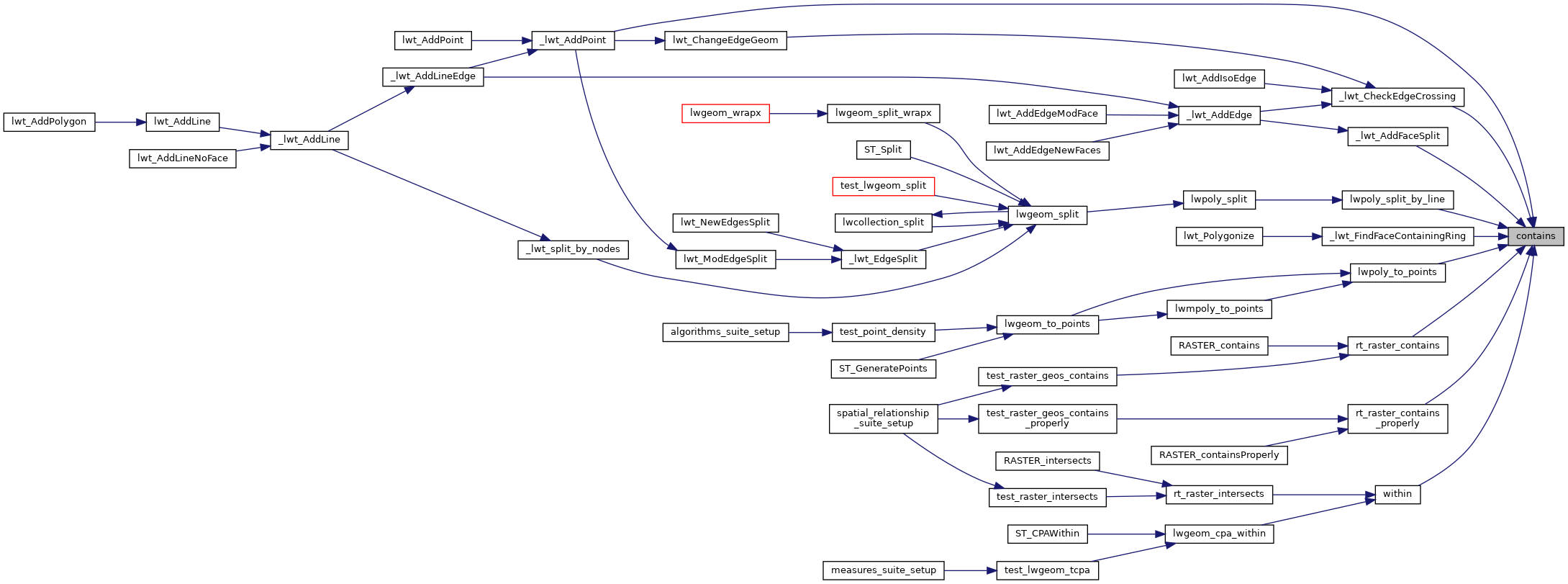1683 GEOSGeometry *g1, *g2;
1690 PG_RETURN_BOOL(
false);
1692 POSTGIS_DEBUG(3,
"contains called.");
1702 PG_RETURN_BOOL(
false);
1716 POSTGIS_DEBUG(3,
"Point in Polygon test requested...short-circuiting.");
1723 retval = (pip_result == 1);
1729 int found_completely_inside =
LW_FALSE;
1732 for (i = 0; i < mpoint->
ngeoms; i++)
1740 if (pip_result == 1)
1741 found_completely_inside =
LW_TRUE;
1743 if (pip_result == -1)
1750 retval = retval && found_completely_inside;
1756 elog(ERROR,
"Type isn't point or multipoint!");
1757 PG_RETURN_BOOL(
false);
1777 POSTGIS_DEBUG(4,
"containsPrepared: cache is live, running preparedcontains");
1778 result = GEOSPreparedContains( prep_cache->
prepared_geom, g1);
1779 GEOSGeom_destroy(g1);
1784 if (!g1)
HANDLE_GEOS_ERROR(
"First argument geometry could not be converted to GEOS");
1789 GEOSGeom_destroy(g1);
1791 POSTGIS_DEBUG(4,
"containsPrepared: cache is not ready, running standard contains");
1792 result = GEOSContains( g1, g2);
1793 GEOSGeom_destroy(g1);
1794 GEOSGeom_destroy(g2);
1799 PG_FREE_IF_COPY(geom1, 0);
1800 PG_FREE_IF_COPY(geom2, 1);
1801 PG_RETURN_BOOL(result > 0);
int gbox_contains_2d(const GBOX *g1, const GBOX *g2)
Return LW_TRUE if the first GBOX contains the second on the 2d plane, LW_FALSE otherwise.
void gserialized_error_if_srid_mismatch(const GSERIALIZED *g1, const GSERIALIZED *g2, const char *funcname)
int gserialized_get_gbox_p(const GSERIALIZED *g, GBOX *gbox)
Read the box from the GSERIALIZED or calculate it if necessary.
LWGEOM * lwgeom_from_gserialized(const GSERIALIZED *g)
Allocate a new LWGEOM from a GSERIALIZED.
int gserialized_is_empty(const GSERIALIZED *g)
Check if a GSERIALIZED is empty without deserializing first.
uint32_t gserialized_get_type(const GSERIALIZED *g)
Extract the geometry type from the serialized form (it hides in the anonymous data area,...
void lwgeom_geos_error(const char *fmt,...)
void lwmpoint_free(LWMPOINT *mpt)
LWMPOINT * lwgeom_as_lwmpoint(const LWGEOM *lwgeom)
void lwgeom_free(LWGEOM *geom)
#define POINTTYPE
LWTYPE numbers, used internally by PostGIS.
#define LW_TRUE
Return types for functions with status returns.
PrepGeomCache * GetPrepGeomCache(FunctionCallInfo fcinfo, GSERIALIZED *g1, GSERIALIZED *g2)
Given a couple potential geometries and a function call context, return a prepared structure for one ...
RTREE_POLY_CACHE * GetRtreeCache(FunctionCallInfo fcinfo, GSERIALIZED *g1)
Checks for a cache hit against the provided geometry and returns a pre-built index structure (RTREE_P...
static LWPOINT * lwgeom_as_lwpoint(const LWGEOM *lwgeom)
static int pip_short_circuit(RTREE_POLY_CACHE *poly_cache, LWPOINT *point, GSERIALIZED *gpoly)
#define HANDLE_GEOS_ERROR(label)
static char is_point(const GSERIALIZED *g)
GEOSGeometry * POSTGIS2GEOS(GSERIALIZED *pglwgeom)
static char is_poly(const GSERIALIZED *g)
const GEOSPreparedGeometry * prepared_geom
The tree structure used for fast P-i-P tests by point_in_multipolygon_rtree()

